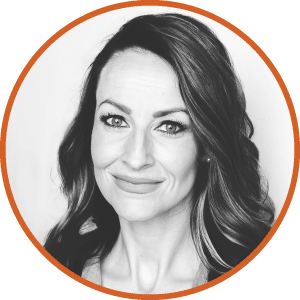Meet the Team: An Interview with AllenComm’s Amy Weiland
Amy Weiland was recently promoted to the newly created position of Performance Strategy Manager for AllenComm. Weiland brings fourteen years of experience creating innovative learning solutions to her expanded role, where she will divide her time between overseeing performance consultants, working on internal initiatives, and helping with project and proposal designs.
“Weiland is passionate about motivating others, providing guidance, and helping maximize efficiency without compromising quality,” said Anna Sargsyan, Chief Learning Officer for AllenComm.
Weiland’s client work has included design on a wide variety of topics, such as sales force training, ethics and compliance, and infrastructure rebuilding. “Amy excels at building strong rapport, both with her clients and internally. At AllenComm, Amy has a reputation of being an effective communicator and an excellent team player,” said Sargsyan.

AMY WEILAND
Performance Strategy Manager
“Given the current conditions of workplace dynamics today, I think we have a great opportunity as L&D professionals to showcase our value and our commitment to positively impacting our organization.”
Weiland spoke with AllenComm writing staff about the insights she’s gained throughout her career.
Q. Tell us about your background with AllenComm – how long have you worked here and how did you get started?
A. I joined AllenComm as a Performance Consultant on October 1, 2018. My years of creating strategic learning solutions for Employee Assistance Programs and large organizations has confirmed to me that Learning and Development can affect positive change in organizations. I feel lucky to play a small part in that positivity. I guess you could say I design learning initiatives using empathy and optimism as professional fuel.
Q. What are some of your memorable moments here?
A. Aside from the wonderfully colorful Halloween parties, my most memorable moments are when I attended my first design workshop three days after starting with the organization. I was impressed with the precision with which the meeting was orchestrated and the obvious respect for the client’s needs and ideas. I recall our first Town Hall shortly after we had moved to remote work. In that meeting I felt reassured that our company culture, our professional, yet witty, slightly odd company culture was going to sustain us through a future we, at the time, were unsure of.
Q. What insights have you gained while working on some of your favorite projects?
A. I’ve learned that creativity and thinking outside the box are necessary but shouldn’t take precedence over solid, performance-based design. I’ve learned that when given the time and safe space to do so, clients will offer insights into learner needs that were initially difficult to define. And those insights can shape a design that becomes more meaningful to the learners and the organization overall.
I’ve also learned that collaboration and strong team cohesion throughout the design and development process not only makes the process run far more smoothly but makes for a better deliverable.
Q. What challenges does the Learning and Development industry face?
A. Given the current conditions of workplace dynamics today, I think we have a great opportunity as L&D professionals to showcase our value and our commitment to positively impacting our organization. We can do this by addressing the two challenges I see in our industry right now:
First, reaching learners where they are. Whether that’s adjusting training to reach employees who are now working within their homes or reaching and supporting them with content that is relevant, meaningful, and genuinely helpful in their current roles. Second, creating consistency and reestablishing trust in training.
Q. What are some ways you recommend we address those challenges?
A. To reach learners where they are: Listen to your learners. Empathize with their circumstance. Set up brief focus groups, talk with your SMEs, to understand the needs of your teams. Ask questions to discover the most immediate needs then determine if you should expand, enhance, or eliminate ineffective pieces of your training.
To create the consistency and reestablish trust in training, be responsive in your designs instead of reactive. Yes, we might need to get something in front of a learner immediately, but if you can’t see a long-term plan for the initiative, pause. Can you tie it back to the Enterprise competencies and visions? Is it action-based not information inundation? How will this solution enhance future learning? While it might be a low-tech solution, what will your high-tech solution be in the future? This empathic design lens means being conscious of what materials you put in front of the learners and when.
Q. Who is someone you admire (outside AllenComm) and why?
A. Dr. Brené Brown. Her research on shame and vulnerability, especially in the way we work and influence, should inform our approach to designing learning and development programs.
Q. Say you have yourself from your first day at AllenComm in the room with us, what would you say to her?
A. I’d tell myself to pause. To take a deep breath. Then I’d try prepare myself for the amount of intense gratitude I’d feel to work with such fascinating, intelligent, supportive colleagues and clients who share my passion for helping learners and organizations become successful.





